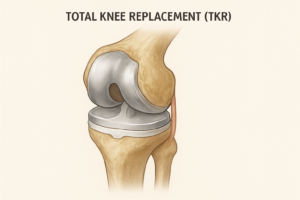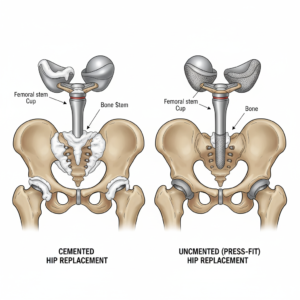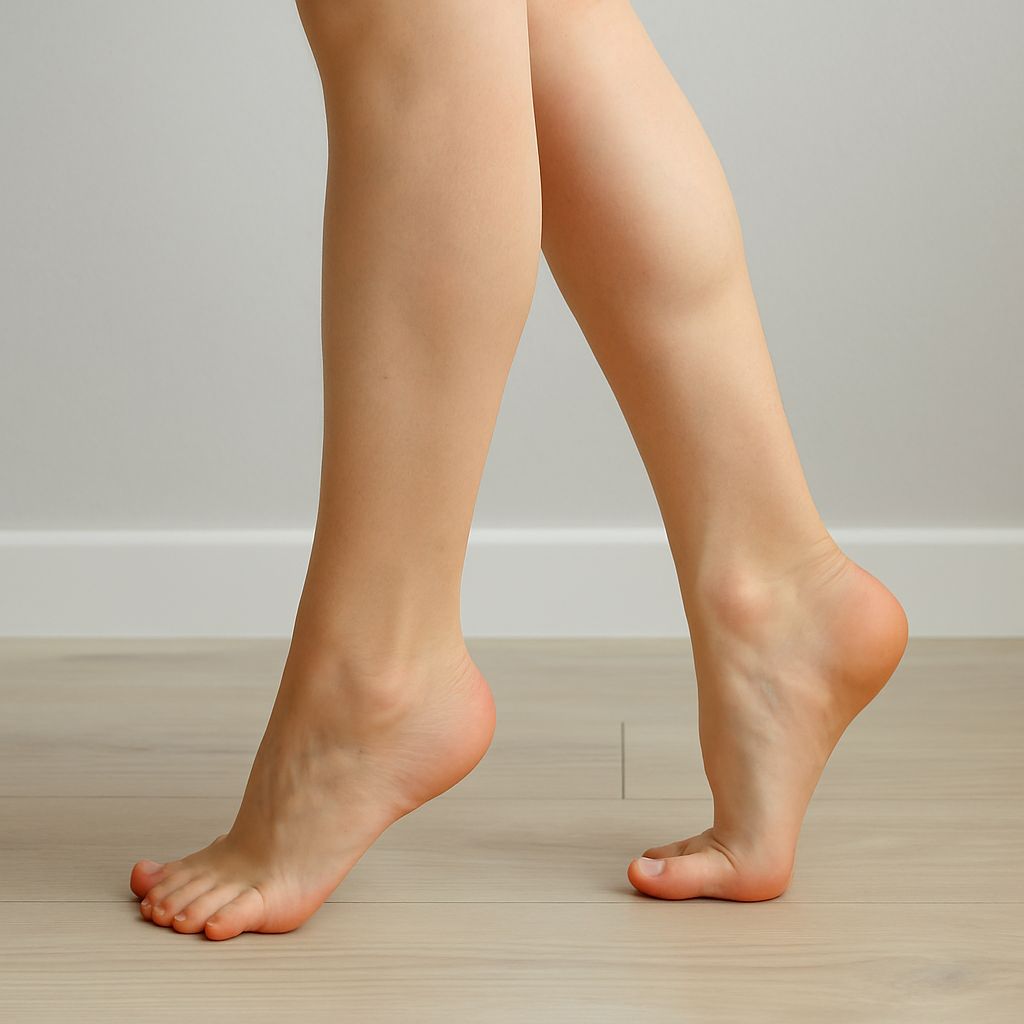TKR typically stands for Total knee replacement, it is a surgical procedure where damaged knee joint is replaced by artificial component or implants to relieve pian and restore function. This procedure is performed to address the symptoms like severe knee pain and functional issues caused by conditions like arthritis and injury.

Purpose
• To relieve pain.
• To restore mobility.
• To improve quality of life
• To restore damage bony structures
Implant
1. Femoral component: covers the end of thigh bone
2. Tibial component: covers the end of shin bone
3. Patellar component: sometimes include kneecap
Types
1. Total knee replacement: replace the entire knee joint.
2. Partial knee replacement: only replace the damage portion.
Risk
• Infection
• Blood clot
• Implant rejection
Total hip replacement (THR)
There are two types of hip replacement surgeries partial hip replacement and total hip replacement.
Total hip replacement
The entire hip joint is replaced the femoral head and the acetabulum. Artificial components made up of plastic, ceramic and metals are used.
Indications
• Chronic hip pain
• AVN
• traumatic injury
• fracture of acetabulum and neck of femur
Partial hip replacement
In this only the head of femur is replaced by prosthetic whereas the acetabulum remains intact.
Cemented and uncemented hip replacement

Cemented
A cemented hip replacement uses a polymethylmethacrylate (PMMA) bone cement to fix the implant surface to the bone. The bone cement creates a grout and fixes the implant by acting as an interlocking surface between the implant and the bone rather than simply gluing the implant to the bone.
Uncemented
Uncemented hip replacement uses specially designed prosthetic components for the bone to implant fixation. The femoral component is usually covered with a porous surface on the upper end.
Comparison
Cemented has a chance of developing BCIS (bone cement implantation syndrome) in this the bone material travels in the blood stream and have a chance of breathing difficulty and a heart attack.
In cemented hip replacement one can walk with full weight bearing just after surgery while in uncemented hip replacement one can walk in partial weight bearing for next 4-5 days.
After how many days of TKR/THR surgery one can go for physiotherapy?
For TKR Physiotherapy typically begins within 24-48 hours after the surgery.
In brief for first 1-2 days gentle movement (ATM & knee bending) for reducing stiffness. Standing and walking with support. For next 1-2 weeks focus on strength exercise and till then walk with crutches or walker. Ongoing physiotherapy for 2-3 months are recommended.
For THR also Physiotherapy typically begins within 24-48 hours after the surgery.
In brief for first 1-2 days gentle ROM movement, getting out of the bed and walk some steps but remember one thing for cemented hip replacement one can walk with full weight bearing while for uncemented one can walk with partial weight bearing for initial days. For 1-2 weeks focus must be on improving the range and flexibility and for the next 3-6 weeks focus on strength and balance.
want to be physical therapist-check-Physioneeds Academy




